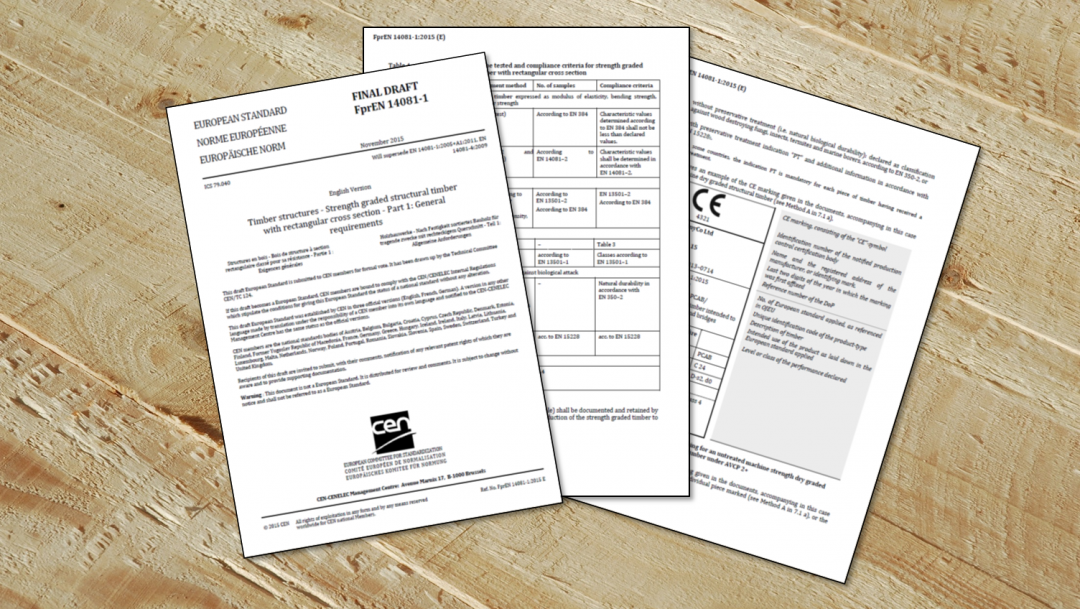
If you have been following the saga of Harmonized European Standards that have not yet been cited in the Official Journal of the European Union you will know that we have some standards (including the one for production of structural timber, by machine or visual grading: EN 14081-1) that sit in a strange limbo of being the current EN (and BS EN) while the withdrawn previous version remains the official Harmonized Standard and therefore the one to actually use (although that is subject to interpretation by the Notified Bodies).
Harmonized Standards are different from regular ENs in the sense that they have a different trigger – EU legislation (in the case of structural timber, the Construction Products Regulation). This means there is an extra acceptance procedure that results in them being cited in the Official Journal of the European Union (OJEU).
But, when a new EN is published by the European Committee for Standardization, CEN (which is separate from the EU), the member National Standards Bodies (of which the British Standards Institute is one) are obliged to publish it and withdraw the previous version. Until that new version is cited in the OJEU it does not have proper status as a Harmonized Standard, but it is supposed to be suitable for acceptance and citation in the OJEU in good time to use it.
Until about a year ago this has gone relatively smoothly – but something clearly went wrong and we ended up with a large number of Harmonized Standards that remained uncited in the OJEU for a very long time. In October, the European Commission launched an action plan to address this problem although it stretches into 2018 so we have to hold our breath still longer.
But what about the specific case of EN 14081-1:2016?
Well, it is still not 100% clear what the problem was with this – but it appears to be a case of different understandings of what a grade/class is. For structural timber we have a great many strength classes – and you are free to invent even more if you want to. They are really just a convenient way of declaring properties for design. For some materials, a grade or class is a kind of restriction – something new that must be met…but for timber, adding more strength classes adds more options, not more restrictions.
And, in fact, we didn’t even add any new strength classes at all – we merely added already existing tension strength classes into EN 338 for convenient reference. We then updated EN 14081-1 so you could better understand what was required when using these tension strength classes – and finally remembered we needed also to mention hardwood D classes that have been around since the beginning.
So, adding reference to these strength classes to the table of visual override requirements appeared to some people as if it was adding new restrictions – and it seems that was the reason for non-citation. If that really is the case, it has been relatively easy to fix – with editing of the text to remove specific reference to these (not actually new) classes – and replacing it with some less concise, and more general text that serves the same purpose. A corrigendum for EN 14081-1:2016 has been prepared by CEN TC124.
There was one other comment from the European Commission, but it referred to a clause that isn’t actually in EN 14081-1 – and water absorption – so we presume it is not relevant.
Now CEN TC124 awaits a response from the European Commission and CEN.

Leave a Reply
You must be logged in to post a comment.